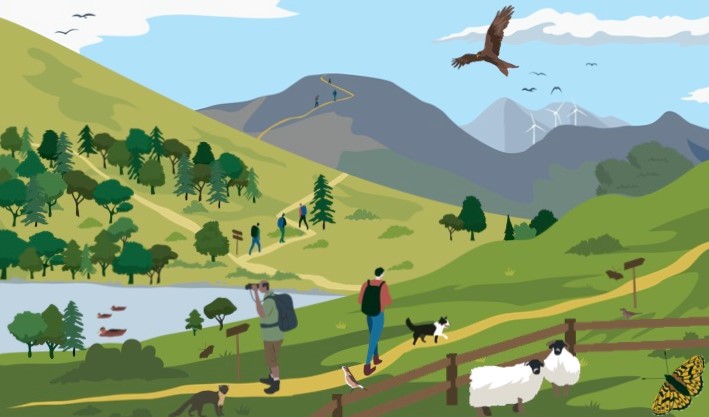Summary
This research aims to outline the methodological approaches to eliciting local attitudes towards woodland expansion so that they may be considered, tailored and applied in a range of locales. In addition, the research aims to demonstrate the successful implementation of a selected method in an area of South Scotland where woodland expansion is biophysically possible, but where levels of social acceptability are unknown. The findings from the research thus help to inform future woodland expansion related planning activities in the study area.

Above: An example of a respondent's preferred landscape produced using the interactive FR LANDPREF tool.
Research Objectives
- Outline the methods available to elicit local attitudes towards woodland expansion, detailing their respective strengths and limitations as well as considerations for implementation.
- Implement a selected approach in consultation with the funders to ascertain local attitudes towards woodland expansion in Southern Scotland, and to assist with future planning activities.
- Document the methods and findings in formal reports.
Findings and Recommendations
- Several methods for eliciting local attitudes towards woodland expansion exist. While these will be familiar to many in principle, their application – including the integration of novel tools and techniques – has a substantial bearing on the reliability and value of the resulting data.
- We demonstrated the potential to reach and engage a remote and sparse population in an area of Southern Scotland (where internet connectivity cannot be guaranteed). This was achieved using an interception approach, computer tablets and an Android app version of a survey which incorporated the interactive LANDPREF tool.
- Survey responses (n = 515) demonstrated that although different values and landscape preferences exist, overall there is strong support for increased trees, woodlands and forests in the study area. Moreover, the vast majority of respondents perceive their local area to be suitable for woodland expansion.
- The prospect of new large-scale productive woodland invokes concerns for wildlife and biodiversity, and the rural road network. If such planting were to happen, respondents wish opportunities and benefits relating to wildlife and biodiversity, local employment and training, and access for recreation to be realised.
- The results provide a foundation for more participatory consultation with the area’s communities and other key stakeholders.
Our Involvement
Forest Research led the research with input from Forestry Commission Scotland who latterly became Scottish Forestry.
Downloads
Funding & Partners
- Funded by Forestry Commission Scotland/Scottish Forestry
